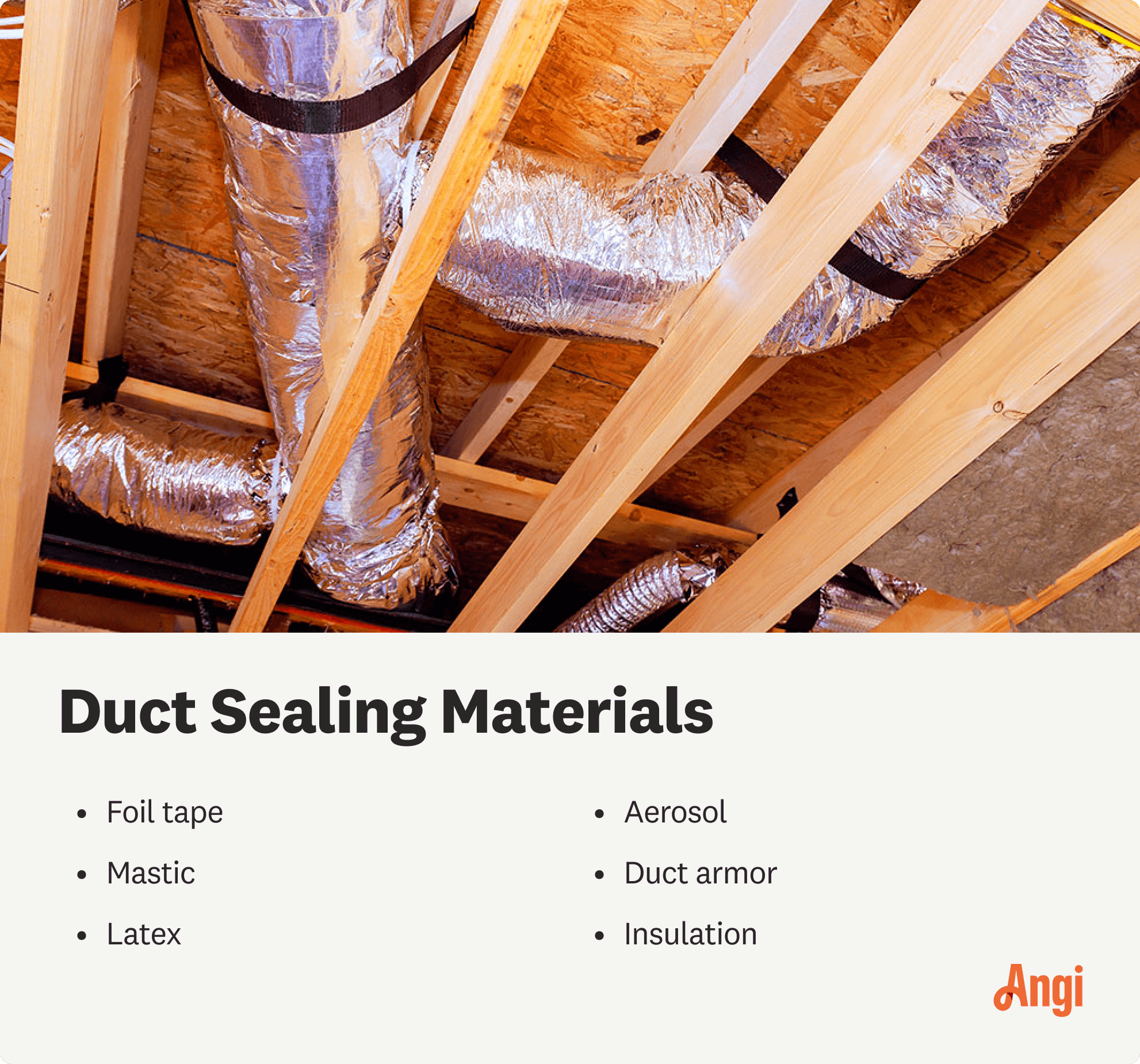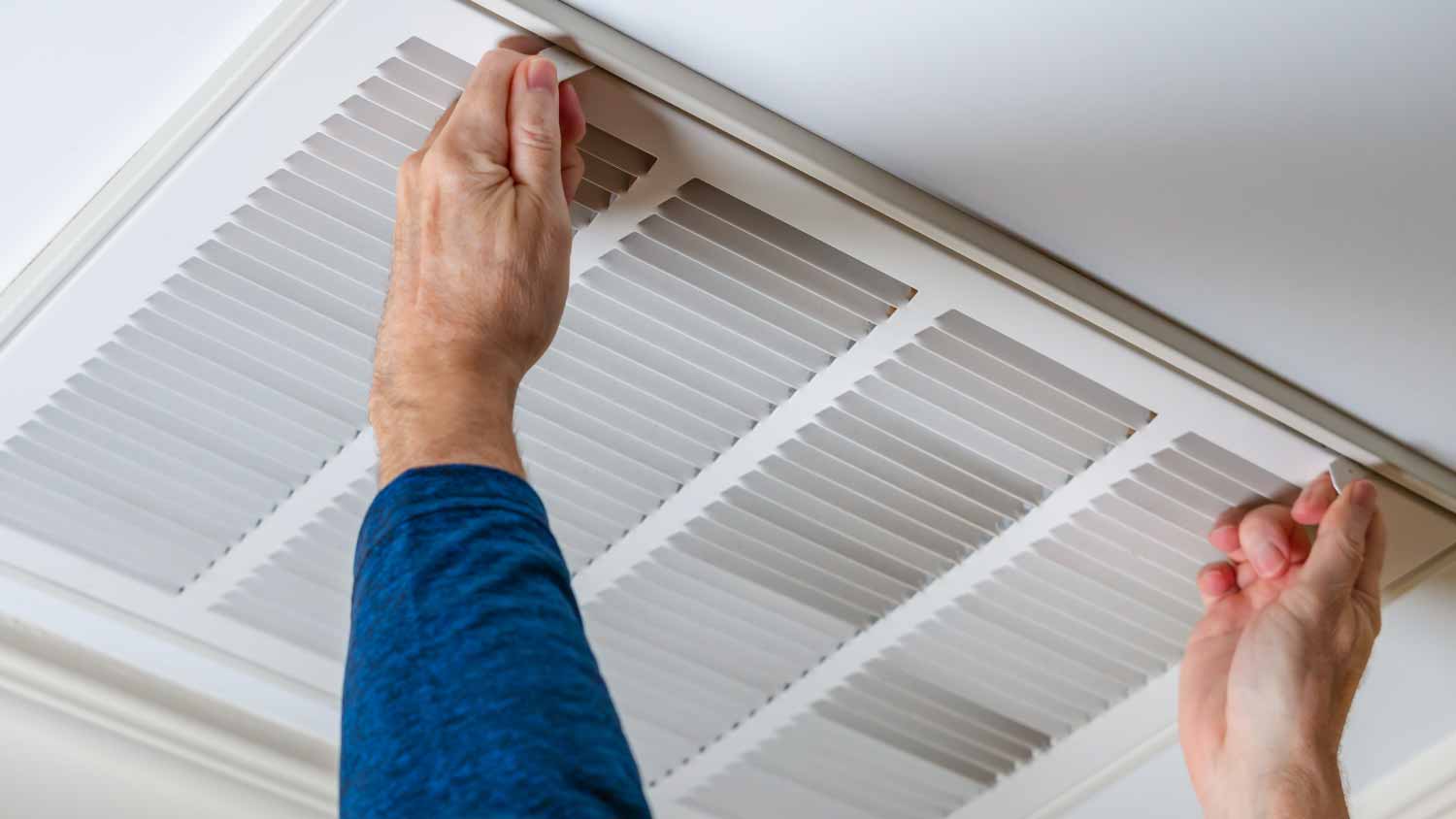
Gas furnace replacement costs depend on the type of furnace you want and installation fees. Our guide explains all the factors involved in a new furnace cost.
Don’t let your ductwork sweat


Poor insulation, leaks, excessive humidity, dirty air filters, and blocked air ducts can all lead to condensation on ductwork.
Look for leaks, reduce humidity, ensure vents remain open, replace air filters, and improve ventilation to stop condensation on air ducts.
You may need to replace your ductwork if it becomes damaged or rusted or if repairs don’t improve its efficiency.
Water buildup on your ductwork occurs when warm, outside air mixes with cooler air in your ductwork. If you notice a buildup of condensation on your ducts, our guide will help you identify what the cause could be. Plus, we’ll show you solutions on how to stop condensation on ductwork.
It isn’t uncommon to discover some moisture on your ductwork. However, if you notice air ducts sweating, you’ll want to address it. Here are some of the common causes:
If your ducts have poor insulation, it allows warmer air to seep through. The effect is similar to removing a can of pop from the refrigerator. As it begins to warm up, you’ll notice sweat beads forming on the can. The same effect applies to your home’s ductwork. If you notice sweat build up in one room, you can reseal the ducts easily with duct mastic. However, if it’s a multi-room problem, it could indicate a design deficiency that requires professional assistance.

Duct leaks cause conditioned air inside the ducts to escape and mix with warmer, humid air outside. This temperature difference causes the moisture in the warm air to condense on the cooler surface of the ducts.
When condensation accumulates, it can lead to moisture buildup on and around the ducts. This is particularly problematic in unconditioned areas such as attics, basements, or crawl spaces. Condensation on ductwork in crawl spaces and similar areas is caused by temperature and humidity levels that can be significantly higher than the conditioned air inside the ducts. If left unchecked, this moisture can lead to problems such as mold growth, water damage, and reduced efficiency of the HVAC system.
If you're unsure if your air ducts have leaks, consider hiring a local ductwork professional. The cost to check for air duct leaks ranges between $100 and $750.
When there are high levels of humidity in the air, your home’s air conditioner has to work harder to remove it.
Some culprits of high humidity presence include humidifiers, hot showers, and even cooking, though in these cases, they’re usually not prolonged problems. A bigger issue could be drafty windows and doors, welcoming warm air into your home, or a ventilation system that isn’t working properly.
Air filters have the task of removing particles and other irritants to make cleaner air that circulates throughout your home. That said, if you don’t replace your air filters at least every 90 days, it could result in particle buildup on the air filter. In turn, it hinders its ability to cycle through cleaner air, and it makes your home’s HVAC system work harder. This leads to higher energy bills and could result in moisture presence on your ductwork.
You could be facing the issue of a blocked duct from several different sources. Damaged ductwork or pests are the most common causes of blocked ducts. If you have either of these issues, you’ll need to call in a pro to help out. In the meantime, make sure you don’t have any furniture obstructing air vents in your home, which could also contribute to the issue.

Now that you know some of the causes of condensation, you can turn your attention to some simple fixes, such as:
One simple way to do this is with a DIY dry duct leakage test. Locate your duct joints (where two ducts meet). Then, run your hand around the joint when your home’s air conditioner or heater runs. If you feel air, it means you have a leak and need to repair it (or call a pro to do so) promptly.
You can achieve this by opening your window for a short period of time in the winter to remove warmer air. You can also use a whole-house dehumidifier, which will reduce condensation on ductwork because it works with your home’s HVAC system to remove excess moisture from the air. It also takes some of the work off the air conditioner, which can lower energy bills. A whole-house dehumidifier costs between $1,300 and $2,800.
Open air vents allow air to flow freely throughout the HVAC system to maintain your air pressure and temperature. Closed vents create a bottleneck that disrupts airflow, causing pressure to build up and force cooled air to escape through any small leaks.
If you notice sweat build up on your ductwork, ask yourself this: When was the last time I replaced the air filter? Depending on the type of air filter you choose, you might need to replace it once every month or once every three months. This is a simple, cost-effective way to ensure your home’s HVAC system works efficiently, and it might help keep condensation on ductwork to a minimum.
Proper insulation acts as a barrier that keeps the cool air in air conditioning systems from losing its temperature as it travels through the ductwork. A consistent temperature within the ducts reduces the risk of the outer surface cooling to the point where it can cause condensation. Quality insulation also keeps external heat and humidity from affecting the ducts for increased efficiency. Air duct insulation cost ranges between $1,000 and $2,700.
Minor leaks, small holes, or loose connections indicate it is time to repair ductwork. Sealing or insulating these areas will improve energy efficiency throughout your home. If the airflow smells musty, a good cleaning could solve the issue. Homeowners can expect ductwork repair costs to cost an average of $660, but depending on the type of repairs required, the cost could range from $200 to $2,100.
You may need to replace ductwork if it becomes severely damaged, rusted, or if repairs are not improving heating and cooling inefficiencies. More telltale signs for replacement include frequent HVAC breakdowns, excessive dust, or high energy bills, which often signal failing ducts.
The average cost for ductwork replacement is $1,250. Factors impacting costs include your home size, location, and type of HVAC system. Remember, regular inspections will help you determine whether a simple fix will suffice or a complete upgrade is the best course of action.
If you have solid DIY skills, you can address condensation on ductwork by sealing leaks with foil tape or insulation. In addition to repairs, you can also use a dehumidifier to help reduce minor moisture issues.
However, if the condensation in your home is severe, it is best to work with a local duct installer. They understand how to address and fix additional underlying issues with condensation, including mold growth and water damage, which can lead to costly structural damage to your dwelling.
From average costs to expert advice, get all the answers you need to get your job done.

Gas furnace replacement costs depend on the type of furnace you want and installation fees. Our guide explains all the factors involved in a new furnace cost.

A blower door test can identify air leaks in your home and help boost energy efficiency. Use this blower door test cost guide to see what your test will total.

What you’ll pay in Columbus, OH, for furnace repairs depends on many factors. Here’s a breakdown of what can go wrong and the cost to fix those issues.

A problem with your heat pump can lead to a house that’s too cold or too hot. Learn the most common heat pump problems—including any weird noises—and their solutions.

Learn about the different types of electric furnaces to decide why you would use one and which option is best for replacing your home heating system.

No one likes a cold shower or a frigid winter night. Regular boiler maintenance and repair will ensure your appliance stays in tip-top shape. Keep the hot water flowing year-round with these easy tips.